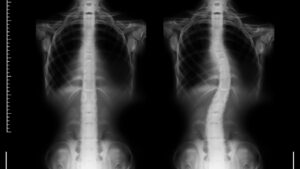Do you often experience aches and stiffness in your body? Or perhaps you experience tightness in your back and neck after prolonged hours of sitting.
If your answer to either or both situations is a resounding yes, you might be suffering from muscle tension, a common musculoskeletal condition that affects many individuals, especially working professionals whose jobs require them to sit in front of the desk for long hours.
In this blog article, we will explore everything you need to know about the condition and how you can manage it effectively.
What is muscle tension?
Muscle tension is a musculoskeletal condition that is characterised by the feeling of soreness, stiffness, or tightness in the muscles. It can occur acutely or chronically. Muscle tension happens when the affected muscles contract but do not relax, resulting in pain and discomfort. It can happen in any part of the body, from the neck and shoulders to the upper and lower back, as well as the legs.
What causes muscle tension?
There are many factors that cause muscle tension:
- Poor posture
- Anxiety and stress
- An extended period of time spent looking down at the phone
- Physical activities-related strains
- High-impact exercises, such as weightlifting, jumping, or running
- Repetitive motion from physical activities
- Overloading or poor lifting techniques
- Muscle tension is an associated symptom of disorders such as arthritis, multiple sclerosis, or fibromyalgia
Muscle tensions are generally more common among working professionals who either have poor sitting postures or lifting techniques.
If your employees or colleagues are constantly voicing out their pains and aches, or if your company’s nature of work requires you to spend long hours sitting in front of the desk or carry heavy equipment, you might want to consider having a corporate wellness program to maintain healthy overall well-being in your company.
Symptoms of muscle tension
Muscle tension ranges from mild to severe, depending on each individual as well as the affected muscle group. Some general symptoms of muscle tension include the following:
1. Tight, stiff, and painful muscles
Affected individuals will often experience stiffness, soreness, or tightness in muscle groups in the back, shoulder, or neck region. They may feel a sharp pain or dull ache that makes it hard to function normally due to the affected muscle group being in a constant state of contraction, resulting in reduced range of motion and flexibility.
2. Fatigue, dizziness, and headaches
Muscle tension also results in fatigue, dizziness, and headaches. This is because when the affected muscles remain tense, blood flow to the affected region is restricted, decreasing the amount of nutrients and oxygen to the muscles. This results in the production of lactic acid, which causes muscle fatigue and soreness.
In addition, muscle tension in the shoulders and neck can result in several nerve compression, which causes the individual to experience dizziness and headaches. The thing about muscle tension that is chronic is that it can lead to chronic fatigue syndrome, which results in the individual experiencing prolonged extreme fatigue, muscle weakness, joint pain, and headaches.
3. Cramps or spasms
The restriction of blood flow to the affected muscle group can also cause muscle cramps or spasms. When left unattended, the lack of nutrients and oxygen can damage the muscle severely. Hence, it is crucial to seek timely care for muscle tension. Chiropractic care is an excellent way as it not only helps to alleviate muscle tension but also helps to target the root cause, which may occur in another part of your body.
How does chiropractic care help to relieve muscle tension?
The goal of chiropractic care is to restore muscle balance and flexibility by relieving pressure from the affected region using non-invasive techniques. Chiropractic care involves not only spinal adjustment or manipulation, such as lower back pain treatment, but also postural exercises and advice, providing comprehensive care. Here are some methods involved in chiropractic care:
1. Relieving muscle tension through chiropractic adjustments
A typical chiropractic approach is spinal adjustment and manipulation. Using specialised instruments or their hands, the chiropractor applies a sudden yet controlled force to the spinal joint, realigning the vertebrae and improving mobility and nerve flow. This, in turn, relieves any pressure on the muscles and nerves.
2. Relieving muscle tension through exercises and stretches
On top of manipulating and adjusting your spine, chiropractors will also educate you on various exercises and DIY stretches that you can conduct to prevent muscle tension, strengthening it and improving your overall posture.
Conclusion
Chiropractic care can help to manage muscle tension effectively. By targeting the root cause and employing a variety of techniques, you are able to experience muscle relief. Here at Healing Hands Chiropractic, our team of chiropractors is dedicated to providing a comprehensive solution to achieve healthy overall well-being. Take charge of your life, and do not live in pain. Contact us to address your muscle tension with chiropractic care today!



